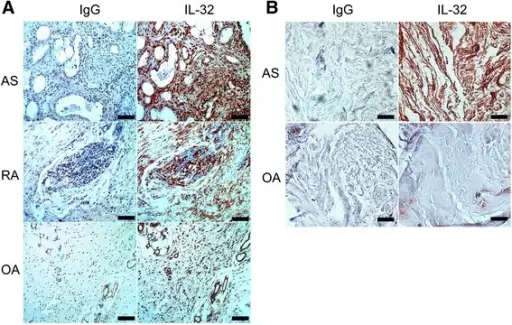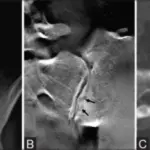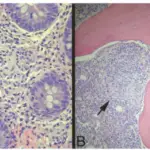Ankylosing Spondyloarthritis is a type of arthritis that mainly affects the spine.
What is the Pathology of Ankylosing Spondyloarthritis?
The pathology of ankylosing spondyloarthritis is:
-Etiology: The cause of ankylosing spondyloarthritis is unknown.
-Genes involved: HLA-B27.
-Pathogenesis: The sequence of events that lead to ankylosing spondyloarthritis is HLA-B27 associated inflammation of the spinal joints.
-Histology: The histology associated with ankylosing spondyloarthritis shows diffuse lymphocytes and plasma cells infiltrate. Lymphoid follicles may also be present.
How does Ankylosing Spondyloarthritis Present?
Patients with ankylosing spondyloarthritis may be male or female. Symptoms typically begin before 45 years of age. The symptoms, features, and clinical findings associated with ankylosing spondyloarthritis include insidious onset of back pain in the sacroiliac joints, which progresses to involve other areas of the spine. Exercise helps ease the pain and stiffness.
How is Ankylosing Spondyloarthritis Diagnosed?
Ankylosing spondyloarthritis is diagnosed with physical examinations, laboratory tests, and imaging studies.
How is Ankylosing Spondyloarthritis Treated?
Ankylosing spondyloarthritis is treated with physical therapy and NSAIDS.
What is the Prognosis of Ankylosing Spondyloarthritis?
The prognosis of ankylosing spondyloarthritis is fair.



